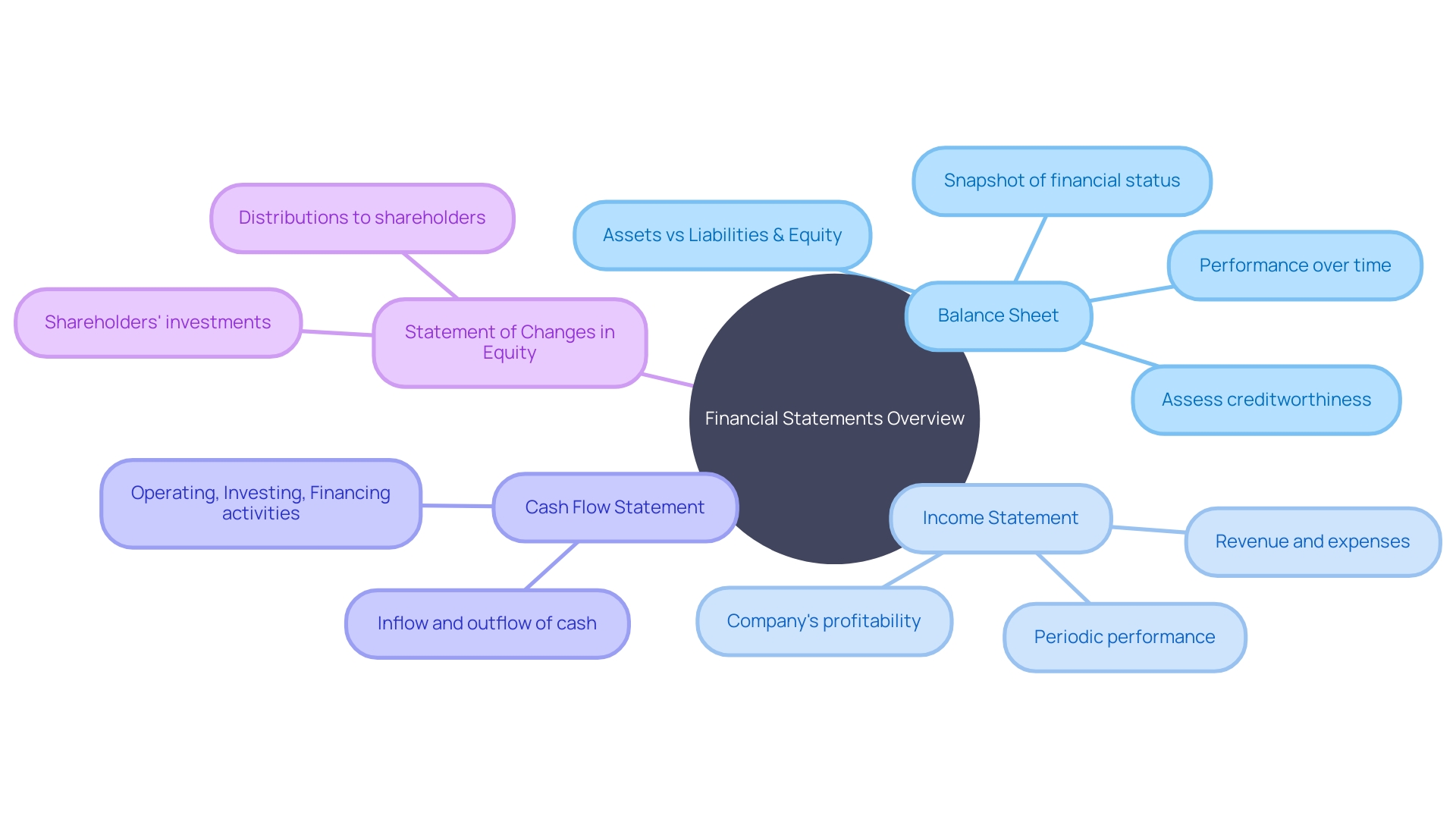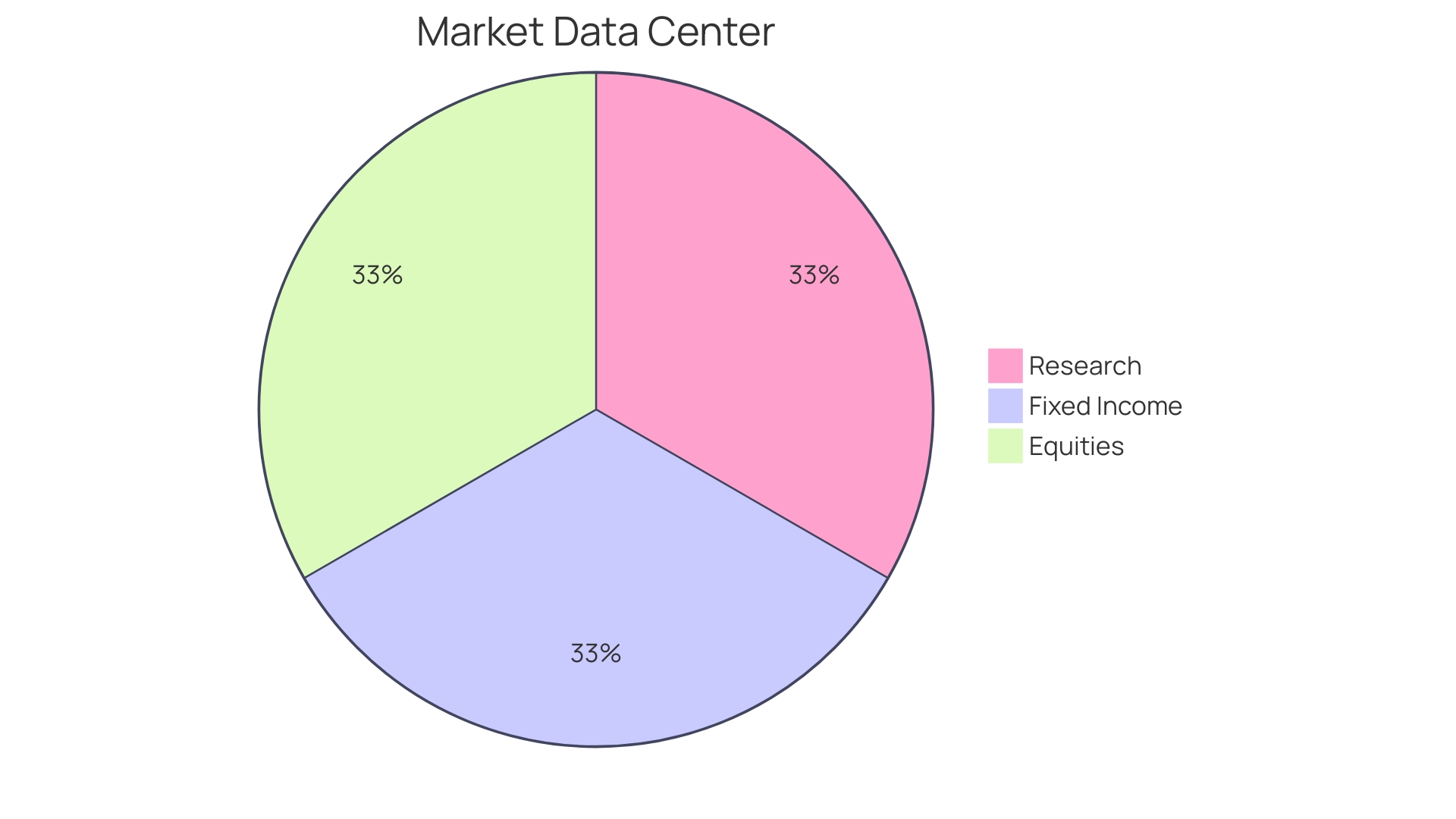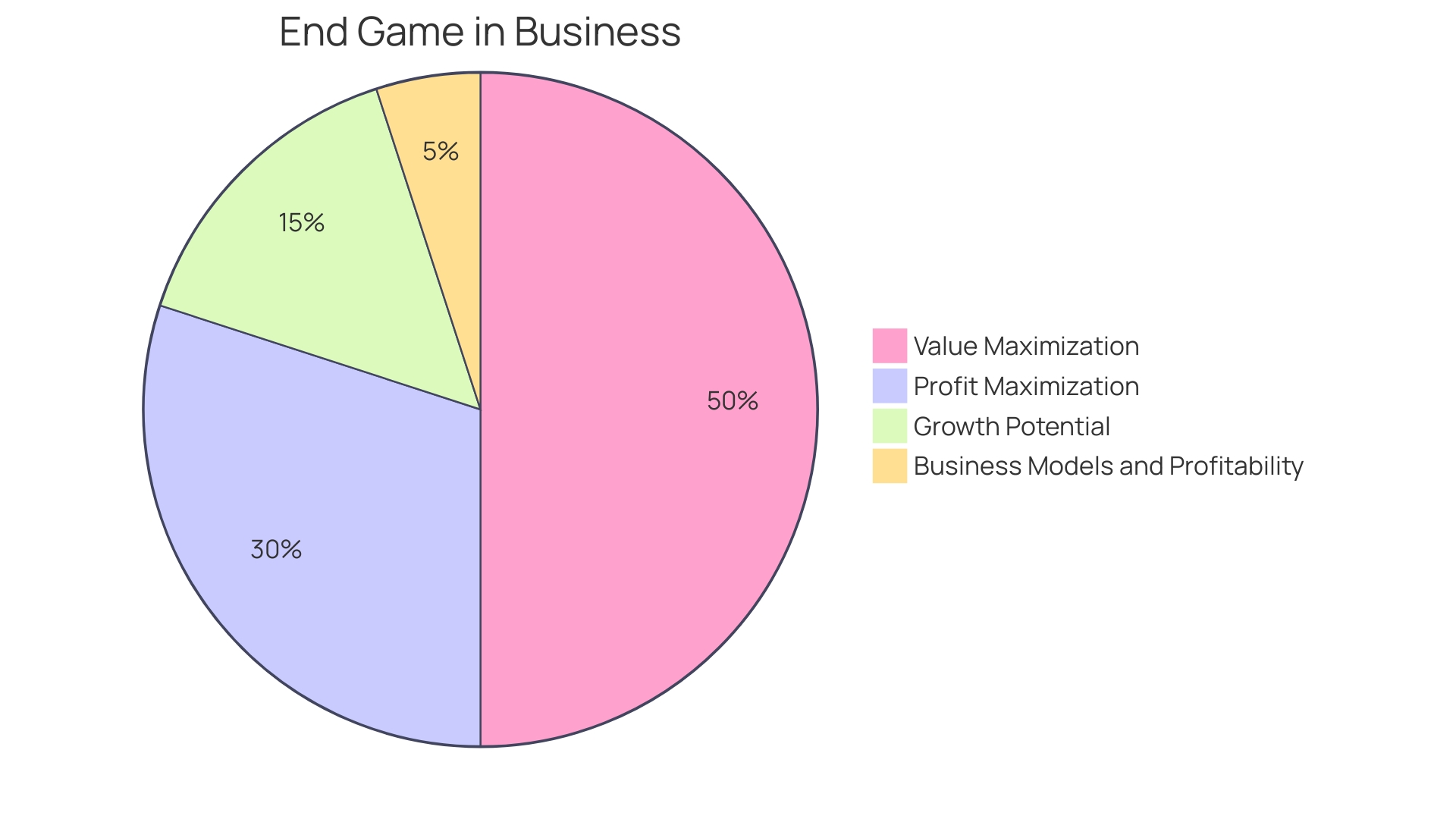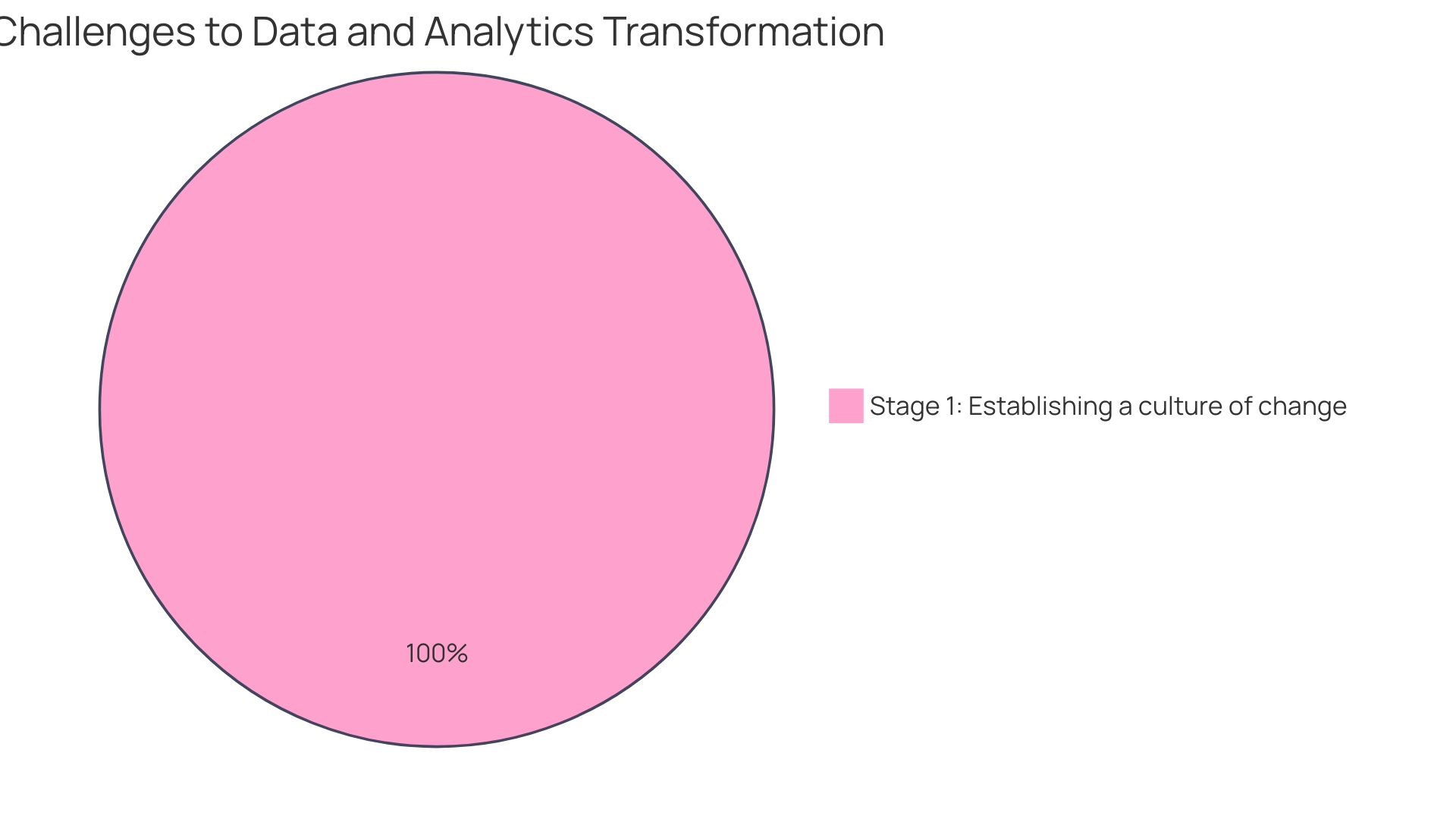Introduction
Understanding financial statements is crucial for a CFO aiming to steer a company towards fiscal prosperity. These statements, such as the balance sheet, income statement, cash flow statement, and statement of changes in equity, provide a clear picture of a company's financial stance, profitability, cash movement, and shareholder value. As the financial reporting landscape evolves, CFOs must stay abreast of developments such as the IFRS 18 standard to ensure clear, comparable, and compliant financial reporting.
Additionally, CFOs must navigate challenges like the shortage of skilled professionals and data security concerns. By utilizing robust financial analytics tools, CFOs can make data-driven decisions that drive sustained growth and profitability. Financial ratios and metrics serve as a compass for CFOs, allowing them to compare their company's performance against industry standards and identify areas for improvement.
Conducting a comprehensive financial health assessment is vital for recognizing operational strengths and weaknesses and integrating external influences. Setting clear, realistic financial goals and crafting a cogent business budget are essential for small businesses to navigate the complexities of the current economy. Effective forecasting and cash flow management enable CFOs to peer into the future and make informed decisions.
Judicious expense management, investment and financing strategies, and leveraging technology for financial analysis are also critical for CFOs. By embracing data-driven insights and technology, CFOs can navigate the financial landscape with confidence and foresight, optimizing financial analysis for their small businesses and driving strategic decision-making.
Understanding Financial Statements
Comprehending the complexities of statements related to finances is crucial for a Chief Financial Officer who intends to guide an enterprise towards economic success. These documents are not mere numbers on paper; rather, they narrate the story of an organization's economic journey. Consider, for instance, the balance sheet, which provides a transparent view of a firm's standing at any given moment, displaying assets, liabilities, and equity. From the perspective of the balance sheet, a CFO identifies the stability of the firm's financial position.
The income statement, another critical component, serves as a record of profitability over a specific accounting period. It thoroughly outlines revenues and expenses, ultimately resulting in the net income, which unveils the organization's earning capacity. This statement is especially indicative of the organization's operational triumph and its capacity to generate profits.
A cash flow statement is equally vital, capturing every nuance of cash movement within the organization, from day-to-day operations to more significant investment decisions. Through careful examination of the cash flow statement, a CFO can assess whether the organization is skilled at generating enough cash from its fundamental activities or if it depends excessively on external funding - a equilibrium that can determine the long-term fiscal well-being.
The statement of changes in equity, or the statement of retained earnings, delves into how a firm's equity evolves over time. This includes a detailed account of net profits or losses and dividend distributions, offering a transparent view of how monetary decisions are influencing shareholder value. It's a crucial tool for comprehending the wider ramifications of a corporation's monetary strategies.
Considering the recent progress and modifications in reporting, like the IFRS 18 'Presentation and Disclosure in Statements,' CFOs must stay updated on these advancements to guarantee their company's reporting remains clear, comparable, and compliant. This new standard aims to enhance the communication of economic information, mandating entities to present income and expenses in specified categories and defined subtotals to foster consistency and comparability.
In the midst of the changing landscape of analytics, the scarcity of skilled professionals and data security concerns, as emphasized in various industry reports, present challenges that must be carefully navigated. However, the use of strong analytics tools can empower CFOs with data-driven insights, enabling them to make more informed and objective decisions that are crucial for steering their companies towards a path of sustained growth and profitability.

Key Financial Ratios and Metrics
Ratios and metrics serve as a compass for CFOs navigating the vast sea of numbers in a business's statements. Key ratios such as the current ratio, quick ratio, gross profit margin, net profit margin, return on assets, and return on equity distill complex data into actionable insights. By leveraging these tools, CFOs can compare their company's performance against industry standards, pinpointing areas in need of enhancement. In the dynamic landscape of business, where Chess.com's growth is nurtured by a stable IT infrastructure and Uber has recently celebrated its first profitable year after refocusing on operational efficiency, understanding economic well-being is more crucial than ever. As we consider the development of bookkeeping from Ancient Mesopotamia to the present, the significance of efficiently measuring and managing performance remains constant. Financial ratios, by transforming raw data into clear percentages, empower CFOs to make informed decisions that align with the organization's strategic objectives and drive value maximization.

Conducting a Financial Health Assessment
Conducting a thorough economic health assessment is crucial for businesses to recognize their operational strong points and areas in need of improvement. For CFOs, a careful analysis of statements, cash flow trends, and ratios is crucial in appraising a company's fiscal well-being. Such an evaluation allows CFOs to recognize and plan for any monetary vulnerabilities or opportunities. Furthermore, incorporating external influences, such as market changes and competitive dynamics, is crucial for a comprehensive evaluation.
Reflecting on the case of Zest, the company's social sustainability, with its emphasis on people over profit, exemplifies the positive impact of strong governance on workforce welfare and loyalty. However, it's also a reminder that such strategies must be balanced with financial considerations. In the broader context, initiatives like the IFRS Foundation's development of global accounting and sustainability standards underscore the importance of transparency and informed decision-making in fostering resilient capital markets.
The yearly review emerges as a strategic tool, not only for gauging past performance against set goals but for insightfully analyzing market standing and adapting to evolving industry trends. This involves a comprehensive examination of company operations, client feedback, employee performance, and market trends, which are invaluable for shaping a robust strategy for the future.
Financial performance analysis should delve into income statements, balance sheets, and cash flow statements to provide a clear picture of the company's fiscal position. Evaluating revenue growth, profit margins, cost management, and investment returns is crucial for informed planning and resource allocation. Moreover, assessing marketing strategies and customer engagement effectiveness is crucial in determining the reach and impact of organizational efforts on the target audience.
Setting Financial Goals and Budgeting
For small enterprises to navigate the intricacies of today's economy, establishing clear, realistic monetary objectives is crucial. A compelling budget lies at the core, serving as a dynamic map that reflects the company's vision and financial trajectory. To establish this, CFOs must collaborate with stakeholders to outline specific, measurable, achievable, relevant, and time-bound (SMART) goals that resonate with the company's mission. This requires a deep dive into cash flow analysis, the lifeblood of any small enterprise, to understand the inflow and outflow of funds and ensure operational costs and growth prospects are well-balanced.
The utilization of a structured financial plan template is essential in this process. It offers a systematic approach to organize financial data and supports informed decision-making. A thorough market analysis, supplemented by reviewing previous years' outcomes and conducting a SWOT analysis for the upcoming year, also provides the foresight needed to adapt and thrive. These steps culminate in a comprehensive budget that facilitates resource allocation, expenditure monitoring, and progress tracking.
Amidst recent challenges—from technological shifts to economic upheavals due to the pandemic and cost of living increases—fewer than half of small enterprises have sought external advice or support. However, considering the fact that there are 33.2 million small enterprises in the United States alone and only a quarter of them manage to survive beyond 15 years, the development of a robust budgeting strategy is more crucial than ever. It's not just about survival but about seizing opportunities for innovation and growth, as evidenced by the 20% of small firms that pivoted to new models during the pandemic.
Regular budget reviews and adjustments ensure the business remains aligned with its objectives, poised to face the future with confidence. By embracing these practices, CFOs can steer their companies towards stability and success, even in the most turbulent times.

Forecasting and Cash Flow Management
Effective forecasting stands as a cornerstone for acumen, allowing CFOs to peer into the future and navigate the seas with agility. Utilizing historical data, market dynamics, and industry specificities, CFOs can create projections that serve as an indispensable compass. These projections are not mere academic exercises; they are pivotal in preparing for cash flow variances, strategizing upcoming expenditures, and shaping investment and financing decisions. A case in point is Auchan Ukraine's implementation of a forecasting model that, through the application of machine learning and NLP, was able to reduce stockouts and excess inventory by 18% within a year. This model, tailored to cater to both regular and fresh items, became a lynchpin in their promotional strategy, extending its predictive prowess up to 55 days in advance and across different countries with minimal adjustments. Such a strategy emphasizes the effectiveness of forecasting as a tool for operational excellence and prudence.
Effective Expense Management Strategies
To stimulate company expansion and guarantee fiscal caution, CFOs must carefully control expenditures without obstructing essential investments. Rigorous analysis of spending patterns and judicious negotiations with suppliers play a pivotal role in identifying areas for cost optimization. By implementing clear, detailed expense policies and educating employees on what constitutes legitimate business expenses, CFOs can minimize misunderstandings and prevent fraudulent practices. Tools such as corporate card programs can provide real-time visibility into expenses, ensuring that each dollar spent is a strategic investment toward organizational growth. This method not just enhances stability but also adds positively to the bottom line.
With a strong understanding of operational costs—which include payroll, inventory, insurance, bills, and more—CFOs can analyze historical information to predict future performance accurately. This data, ideally covering a span of three years, captures seasonal fluctuations and long-term trends, thereby forming the basis for informed decision-making. Understanding the nuances of tax deductions and credits further empowers CFOs to optimize their tax positions and enhance profitability. As the economic landscape changes, staying informed through authoritative publications like The CEO Magazine, Forbes, and The Economist can provide CFOs with the insights needed to navigate the complexities of modern business finance.

Investment and Financing Strategies
CFOs are tasked with guiding a firm's financial path, which involves creating investment and financing strategies to drive the organization's growth aspirations. They must rigorously evaluate various investment opportunities, weighing potential risks against expected returns, and judiciously decide on capital allocation. This critical decision-making process is informed by a deep dive into the organization's life cycle, understanding the current stage of funding, and recognizing success markers unique to each stage, such as profitability pressures that vary from early to later-stage organizations.
Furthermore, CFOs are charged with exploring an array of financing avenues. This exploration is not just about securing funds; it's about understanding the nuances of each option—be it traditional loans, equity financing, or innovative funding mechanisms—and how they align with the company's long-term vision and immediate operational requirements.
This position requires a high level of fiscal acumen, a keen understanding of market conditions, and a strategic mindset. Companies such as PayPal, Ikea, and Adobe demonstrate the significance of diversification in customer base and investment strategy, reflecting a dedication to strong planning.
An instance of proactive strategy is Italmobiliare's approach to investment, which emphasizes acquiring high-quality companies with strong brands and international growth potential, avoiding businesses in turnaround situations. This mirrors Warren Buffett's advice to understand and operate within one's circle of competence, emphasizing the importance of recognizing the boundaries of expertise.
The current financial landscape further emphasizes the need for strategic financial planning. With factors such as economic uncertainties, supply chain disruptions, and evolving market demands—as evidenced by Polestar's forward-looking statements—CFOs must be adept at navigating a rapidly changing environment. This includes maintaining key partnerships, sourcing critical components, and managing risks associated with supply chain relationships.
In the end, the CFO's objective is to maximize the organization's value, sometimes at the expense of short-term profit, to ensure long-term growth and sustainability. This concept is fundamental to corporate finance and is apparent in the strategies utilized by successful enterprises globally.
Using Financial Analysis for Business Decision-Making
The strategic application of monetary analysis is pivotal in charting a company's course through the complex business landscape. Chief Financial Officers (CFOs) must carefully analyze numerical information, examining revenue patterns, cost structures, and profit margins to understand their impact on the organization's fiscal health. This thorough assessment of statements and market trends, as emphasized by the crucial role of analysts, is not just about comprehending current performance but also about predicting future economic trends. By integrating data analytics, CFOs can distill vast amounts of information into actionable insights, thereby enhancing their decision-making prowess.
This analytical approach extends beyond traditional financial metrics to consider broader market dynamics, including socio-cultural, economic, and technological changes. While navigating through different growth paths—such as maximizing sales or expanding customer bases—comprehending the customer experience becomes crucial. Indeed, positive customer engagement can bolster an organization's reputation and drive growth, while poor-quality interactions can have detrimental effects.
Investment strategies, too, must be guided by analytics. Whether through lump-sum investing or dollar-cost averaging, CFOs must weigh potential returns against inherent risks and their own tolerance for volatility. This necessitates a deep dive into past price action and market conditions to optimize profit outcomes.
Embracing science and analytics, thus, is not just a competitive advantage but a necessity for leaders aiming to steer their companies towards sustained success. By utilizing knowledge obtained from a thorough analysis of economic information and market intelligence, CFOs are more prepared to anticipate and navigate the monetary future of their organizations.
Leveraging Technology for Financial Analysis
In the domain of money management, technology acts as an essential partner, empowering CFOs with the tools required to improve analysis precision and operational effectiveness. By utilizing advanced analysis software, CFOs can effortlessly automate the gathering of information, conduct intricate computations, and produce reports rich in insights. This integration of cutting-edge technology streamlines the analysis process, yielding significant time savings, minimizing the likelihood of errors, and furnishing executives with up-to-the-minute data that informs strategic decision-making.
For example, M&T Bank, with its venerable 165-year history, has embraced this digital evolution, setting a benchmark for software quality standards to ensure their systems are not only efficient and reliable but also compliant with stringent industry regulations. By prioritizing 'Clean Code' practices, the bank has strengthened its software maintainability and performance, thus reducing risks such as security breaches and reputational harm.
Similarly, in the dynamic landscape of financial services, AI-powered tools are revolutionizing how professionals interact with and utilize crucial business knowledge. Financial institutions are leveraging the power of AI, such as the AWS-based chatbot, to navigate the flood of information, from market fluctuations to regulatory shifts, ensuring that relevant information is accessible when required, ultimately enhancing decision-making efficiency.
Furthermore, recent progress in analytics have emphasized the significance of analytics in finance. Financial institutions harness analytics for a wide range of applications, from managing risks by examining historical and real-time information to extracting customer insights for strategic advantage. With the emergence of technologies like machine learning, AI, and blockchain, the potential for analytics in the financial sector has expanded, enabling for deeper analysis and bolstered security in transactions.
The burgeoning influence of AI in finance is reflected in the emergence of sophisticated machine learning systems and rule-based chatbots. These AI strands, including intricate artificial neural networks, imitate human learning processes, enabling the analysis of non-linear information sets and the application of acquired knowledge to fresh challenges. The development of foundation models, powered by more complex networks and extensive data training, has been facilitated by the reduced costs and increased accessibility of computational power.
In essence, the sector's trajectory is being reshaped by these technological innovations, which not only simplify the analysis process but also provide a strategic edge in a competitive, data-driven ecosystem. Leaders who skillfully integrate these tools into their operations will be well-positioned to navigate the complexities of today's economic landscape with confidence and foresight.
Implementing Financial Analysis in Your Small Business
To enhance the analysis of finances, CFOs need to promote a methodical approach that includes the compilation, examination, and understanding of fiscal information. It is crucial to create consistent report templates and educate all relevant parties on the adherence to these established reporting protocols. This initiative is exemplified by Nets, a digital payment solutions provider, which took on the intricate task of converting technical information into user-friendly formats that encourage proactive information discovery. By instilling a financial analysis-centric ethos, CFOs enable staff to harness insights for strategic decision-making, bolstering the company's prosperity.
Embracing analytical reports is pivotal for business strategy and decision-making. These reports dissect issues or datasets to unveil trends and correlations, serving as a navigational tool through market dynamics. A primary step is establishing clear objectives and amassing pertinent data, which can be streamlined by leveraging tools with data automation capabilities. For example, analysts play an indispensable role by analyzing statements and market conditions, delivering insights for overcoming fiscal hurdles and seizing investment opportunities.
In light of recent technological advancements and significant socio-economic shifts, such as the challenges posed by Brexit and the pandemic, small enterprises, in particular, are experiencing mounting pressures. With a third of small enterprises facing existential threats in the past five years, the significance of strong financial planning becomes evident. Moreover, the pandemic's impact on small businesses underscores the need for agility, as nearly half reported decreased turnover, necessitating workforce reductions and, for some, a complete business model overhaul.
Consequently, CFOs must prioritize data-driven decision-making. A S&P Global survey from 2022 revealed that nearly 25% of respondents indicated their decisions are predominantly data-driven, with an additional 44% stating that most decisions are influenced by data. Using analytics tools enables decision-makers to transcend biases and make more informed choices. Navigating a company through the complexities of today's financial landscape requires a blend of big-picture understanding and meticulous attention to detail, an approach that is critical for both short-term management and long-term financial strategy.

Conclusion
In conclusion, understanding financial statements is crucial for CFOs in steering their companies towards fiscal prosperity. By utilizing robust financial analytics tools, CFOs can make data-driven decisions that drive sustained growth and profitability. Financial ratios and metrics serve as a compass for CFOs, allowing them to compare their company's performance against industry standards and identify areas for improvement.
Setting clear, realistic financial goals and crafting a cogent business budget are essential for small businesses to navigate the complexities of the current economy. Effective forecasting and cash flow management enable CFOs to make informed decisions. By embracing data-driven insights and technology, CFOs can navigate the financial landscape with confidence and optimize financial analysis.
In conclusion, CFOs who understand financial statements, leverage financial ratios and metrics, conduct comprehensive financial health assessments, set clear financial goals, and embrace technology and data-driven insights can confidently steer their companies towards sustained growth and profitability.




